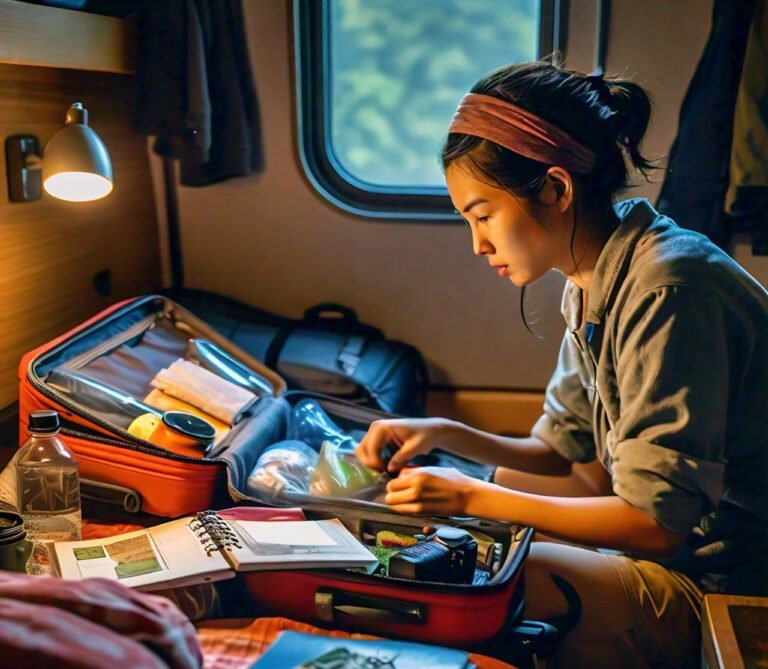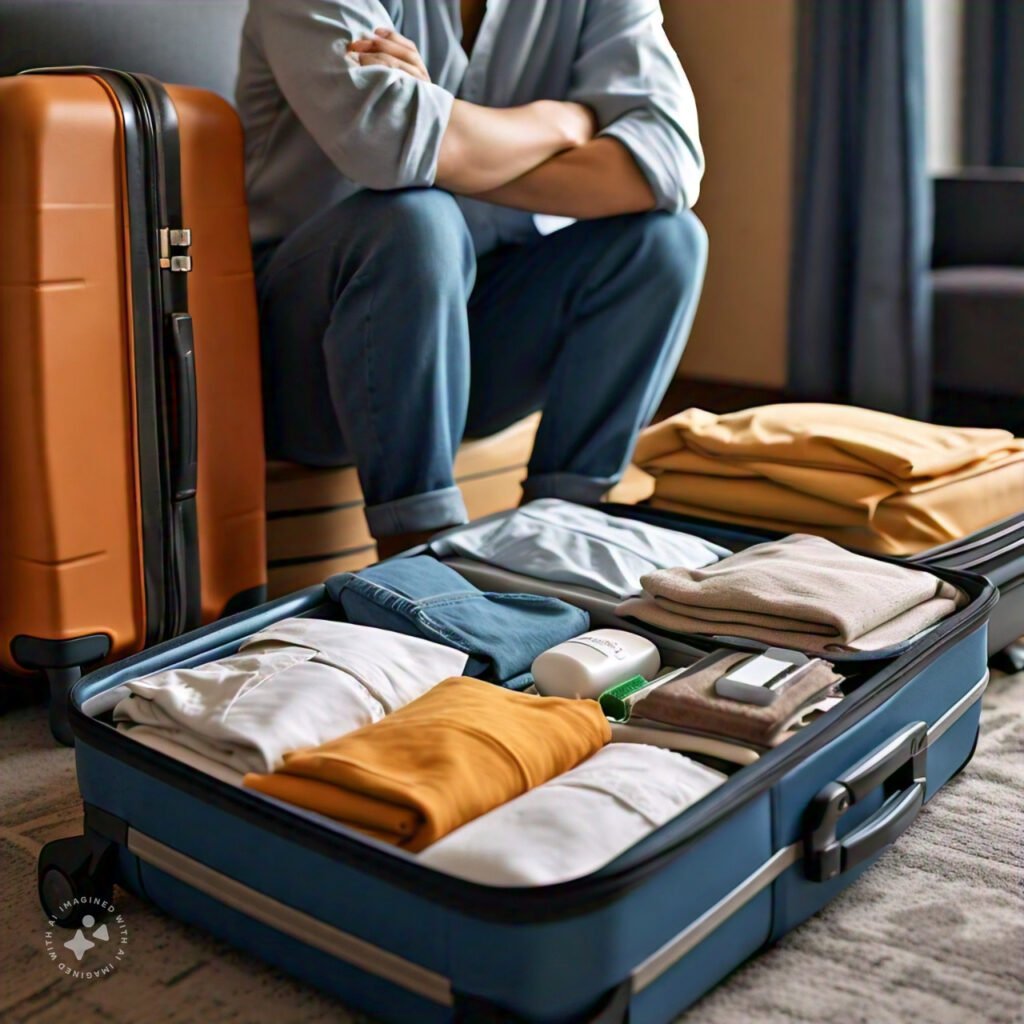Introduction
Traveling light can be one of the best ways to make your journey stress-free, efficient, and enjoyable. With the increasing costs of checked baggage and the hassle of lugging heavy suitcases through airports, packing light has become a skill worth mastering. Whether you’re headed on a weekend getaway or a month-long adventure, this guide will help you pack smartly and efficiently, covering everything from the basics of lightweight packing to advanced tips that even seasoned travelers can appreciate.
1. Why Packing Light Matters
Convenience and Mobility
One of the primary benefits of packing light is the convenience it offers. With a smaller, lighter bag, you can move more freely through crowded airports, navigate public transportation with ease, and have an overall more enjoyable travel experience.
Saves Time and Money
Airlines increasingly charge for checked bags, so by packing light and sticking to a carry-on, you save both time and money. Additionally, you’ll skip the baggage claim line upon arrival, getting you to your destination faster.
2. Understanding Airline Baggage Rules
Carry-On Dimensions and Weight Limits
Airlines have specific guidelines regarding carry-on luggage. Most airlines allow a bag up to 22 x 14 x 9 inches (or 56 x 36 x 23 cm), though this can vary. Be sure to check the dimensions for your airline to avoid unexpected fees.
Personal Item Allowance
In addition to a carry-on, airlines often allow a “personal item” like a purse, laptop bag, or small backpack. Maximize this allowance by choosing a personal item that can carry essentials you may need during the flight or items that didn’t fit in your main bag.
3. Choosing the Right Luggage
Types of Luggage for Packing Light
A good lightweight bag is crucial for efficient packing. Consider options like:
- Backpacks: For those who want to stay mobile, a backpack is ideal for short trips.
- Rolling Suitcases: These provide ease for longer trips while still meeting carry-on requirements.
- Duffel Bags: Flexible and often spacious, duffels work well for packing odd-shaped items.
Features to Look for in Lightweight Luggage
When choosing a bag, prioritize features such as:
- Durability: Look for materials like nylon or polycarbonate.
- Compartments: Multiple compartments help in organizing your items.
- Lightweight Construction: Aim for a bag that weighs under 5 lbs. (2.2 kg).
4. Planning Your Packing List
The Art of Packing Versatile Items
Packing light isn’t just about minimizing the number of items—it’s also about selecting versatile pieces that serve multiple purposes. When making a packing list, think about items that can be mixed, matched, and layered.
Creating a Travel Capsule Wardrobe
A travel capsule wardrobe is a small collection of essential items that all coordinate with each other. Choose 2-3 bottoms, 4-5 tops, and 1-2 layers (like a sweater or jacket) that can be interchanged to create a variety of outfits.
5. Clothing Tips for Packing Light
Choose Lightweight Fabrics
Opt for fabrics that are light, breathable, and easy to wash. Materials like merino wool, microfiber, and synthetic blends are excellent choices because they’re compact, wrinkle-resistant, and odor-resistant.
Roll, Don’t Fold
Rolling clothes instead of folding them can save space and help minimize wrinkles. Place rolled clothes in packing cubes or compression bags to maximize your suitcase’s capacity.
Limit Shoes and Accessories
Shoes are bulky and take up valuable space. Limit yourself to two pairs: a comfortable pair for walking and one that suits your evening outings. For accessories, keep it simple with items that add flair without bulk.
6. Organizing Your Essentials
Packing Cubes for Easy Organization
Packing cubes are a great way to separate different categories of items and keep your suitcase organized. Use separate cubes for clothes, toiletries, electronics, and other essentials. This not only saves space but also makes it easier to locate items during your trip.
Compression Bags for Extra Space
If you’re short on space, consider using compression bags. These can reduce the volume of bulky items like jackets and sweaters, giving you more room for other essentials.
7. Travel-Friendly Toiletries
Miniature or Travel-Sized Products
Airlines impose restrictions on liquids in carry-on bags, generally limiting containers to 100 ml or 3.4 oz. Consider investing in travel-sized toiletries or transferring products into small, reusable containers to stay within these guidelines.
Multi-Use Products
Save space by choosing multi-use products like a shampoo bar that doubles as body soap or a moisturizer with SPF. These items reduce the number of products you need to bring, lightening your load.
Dry Toiletries as an Alternative
For added convenience, switch to dry versions of products. Solid shampoo, conditioner, toothpaste tablets, and soap bars are TSA-compliant and won’t leak or take up much space.
8. Gadgets and Electronics 
Many travelers make the mistake of overpacking electronics. Prioritize essentials, like a smartphone, compact camera, and perhaps a lightweight tablet or e-reader for entertainment. Consider leaving laptops behind unless absolutely necessary.
Universal Charger and Adapter
A universal charger or power bank can be a lifesaver, especially if you’re unsure about outlet compatibility at your destination. Some compact chargers offer multiple ports, allowing you to charge multiple devices at once.
9. Tips for Packing Efficiently
The “Rule of Threes” for Clothing
The rule of threes is a popular strategy among light packers. Bring three pairs of each clothing item: one to wear, one to wash, and one as a backup. This approach works especially well for underwear, socks, and T-shirts.
Layering Instead of Bulky Items
Instead of packing one thick coat or sweater, opt for layering pieces that can be worn together for warmth. A base layer, mid-layer, and a lightweight jacket can provide the same warmth without taking up as much space.
Wear Your Heaviest Items on the Plane
If you need to bring a heavy jacket, boots, or other bulky items, wear them on the plane. This not only keeps your bag light but also gives you access to warm clothing if the plane gets chilly.
10. Frequently Asked Questions (FAQs)
1. How Do I Pack for a Week in a Carry-On?
The key is to limit your packing list to essentials and versatile clothing items. Use a travel capsule wardrobe, minimize footwear, and rely on packing cubes or compression bags to save space.
2. What Should I Not Pack in a Carry-On?
Avoid packing restricted items like large liquids, sharp objects, and some electronics. Check with your airline for specific guidelines.
3. How Do I Deal with Wrinkled Clothes?
If your clothes get wrinkled, hang them in the bathroom during a hot shower. The steam helps to relax the fabric. Alternatively, use a travel-size wrinkle-release spray.
Conclusion
Packing light is a skill that, once mastered, can change the way you travel. By following the steps in this guide, you’ll not only save time and money but also enjoy the freedom that comes from traveling with just the essentials. Remember to start with a streamlined packing list, choose versatile clothing, and organize efficiently. With a bit of planning and practice, you’ll be able to pack light for any adventure without sacrificing comfort or convenience. Safe travels!
Last Update: November 14, 2024





